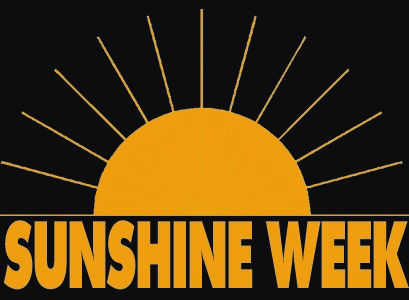BE INFORMED: This is one in a series of articles to mark Sunshine Week, which is a national initiative to educate the public about the importance of open government.
MORGANTOWN – The new round of federal COVID-19 relief for states, counties and cities included in the $1.9 trillion American Rescue Plan – which spends a lot of money on a lot of other things, too – will soon go out.
This round of federal money will be distributed differently, following complaints that many governors – including West Virginia’s – exercised dictatorial control over the CARES Act money.

Many West Virginians, including many legislators of both parties, complain that Gov. Jim Justice should have involved the Legislature in appropriating the CARES money, and there’s still more than $600 million of the $1.25 billion of CARES cash unspent.
The arguments for and against how Justice handled the money have been recounted many times in The Dominion Post. This report looks just at the numbers for CARES, as reported on the state auditor’s transparency website and gives a preview of what’s coming, via charts circulated by Sen. Joe Manchin, D-W.Va.
On top of the $1.25 billion, the state also received $16,353,314 for the Governor’s Emergency Education Relief Fund and generated $2,675,863 in interest for a total $1,269,029,177.
Here’s how Justice allocated the CARES money: $40 million, Small Business Grant Program; $265 million, local governments (counties and municipalities); $50 million, National Guard, testing and PPE; $33 million, broadband development; $50 million, medical-access highways; $287 million, unemployment benefits before July 1, 2020; $300 million, unemployment benefits July 1, 2020 through December 30, 2020; $10 million, Fairmont Hospital; $25 million, public service districts; $57 million, state expense reimbursement for Fiscal Year fourth quarter; $96 million, state expense reimbursement FY2021, Q1 and Q2; $25 million, emergency fund reimbursement.
Here’s what’s been spent, as of March 8: Payroll, $235,347,581.70; agency reimbursement, $57,000,846.75; medical-access highways, $50 million; WorkForce West Virginia, $39,443,860; broadband, $35,010,158; “other,” $120,084,176.50.
Here are a few close-ups: PPE and testing, $33,273,225.16; emergency medical care, $4,075,358.99; medical sheltering, $93,459.28; COVID-19 compliance issues, $67,000.69
The unspent cash balance as of March 8 is $660,242,208. Legislators have expressed many ideas on how this could be used for small businesses and ailing families, among other ideas. Justice is hanging on to it to cover unemployment benefits. The auditor’s site says, “A portion of this balance may be pending disbursement/payment or be set aside (encumbered) for future recipients or programs.”
American Rescue Plan
Manchin said West Virginia will receive a total $4 billion through the American Rescue Plan. The state government will receive another $1.25 billion, same as the CARES allotment, to be administered by the governor and the Legislature.
West Virginia Local governments will receive $677 million: $176 million total for larger metro areas; $153 million for smaller cities; and $348 million for the 55 counties, based on population. Metro areas and counties will receive their money from the U.S. Treasury. The small cities will have theirs distributed through the state treasury; that money must be distributed within 30 days.
Manchin’s charts show that Kanawha County will receive the largest amount, $34.55 million; Berkeley is second at $23.11 million; Monongalia is third at $20.48 million. Among Mon’s neighbors, Preston will get $6.48 million; Marion, $10.87 million; Taylor, $3.24 million; Wetzel, $2.92 million.
Selected local city and town allocations: Fairmont, $7.65 million; Grafton, $2.07 million; Granville, $1.31 million; Kingwood, $1.27 million; Morgantown, $10.65 million; Star City, $810,000; Westover, $1.74 million.
Also included: $11 million for vaccines; $800 million for Pre-K through 12th grade education; $190 million for higher education; $260 million for child care; $152 million for emergency rental assistance; $38.5 million for energy bills; $9 million for senior programs.
Tweet @dbeardtdp




